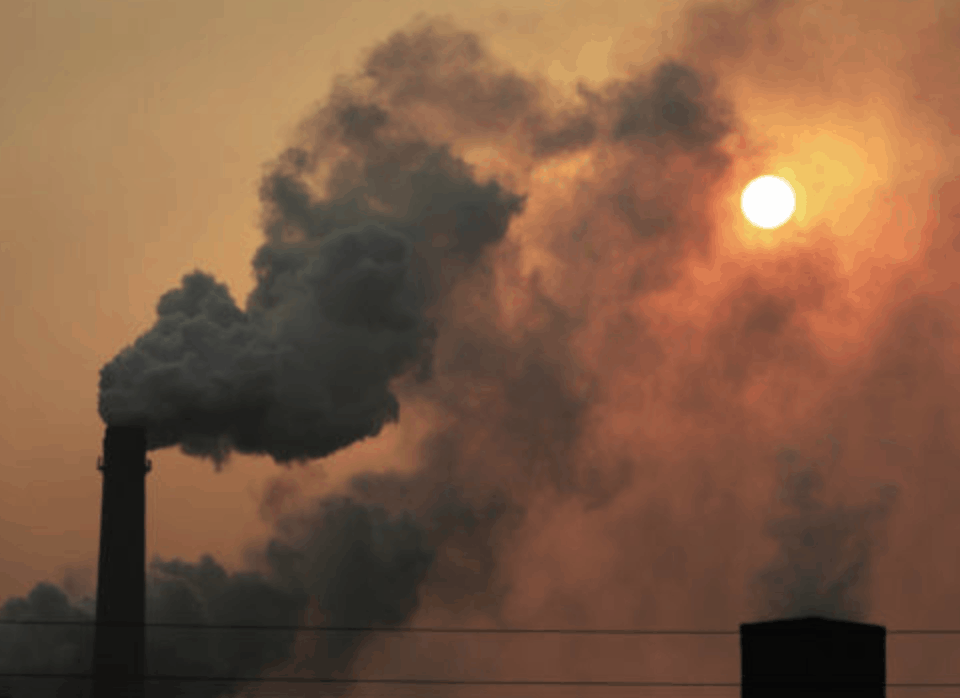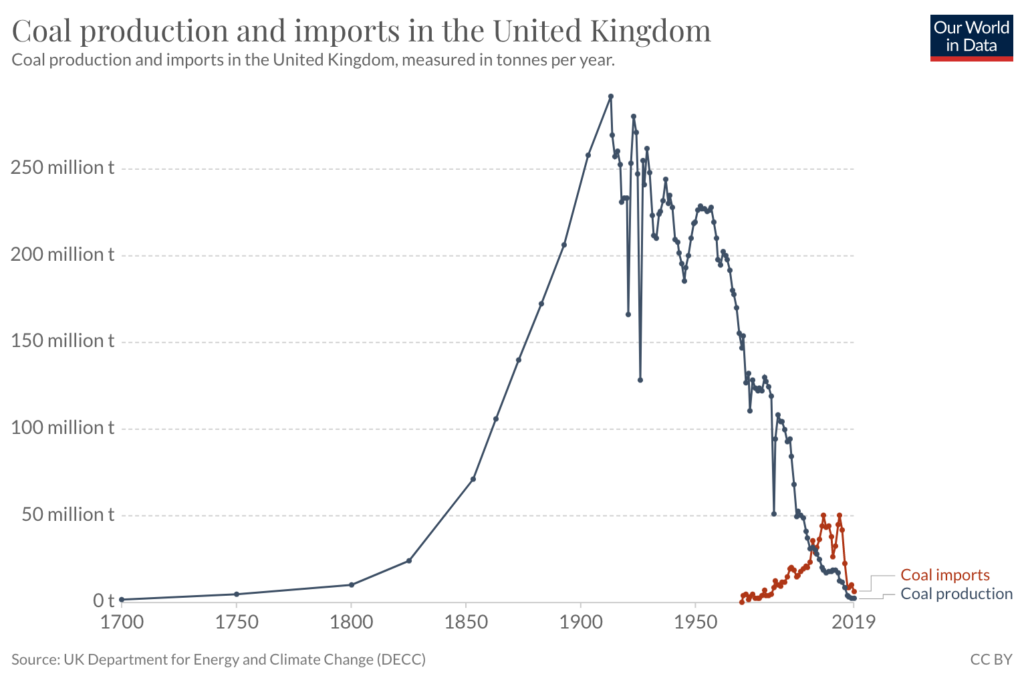While the history of coal mining goes back many thousands of years, it wasn’t until the industrial revolutions of the 19th and 20th century that it became so widely used as a power and heating source. Deep shaft coal mining started at scale in the UK in the late 18th century. The expansion was significant through the 19th century and into the early 20th century when in 1913, UK coal extraction hit almost 300 million metric tons per annum. From that point, despite the various peaks and troughs, an overall decline, as the decades passed become evident.
Domestic heating from coal:
Whilst still in living memory for some, the idea of a single coal fire being the only heating source in a home seems quite alien in today’s world. But this was the reality, especially in poorer homes. It’s easy to see how much demand there was for coal – people relied on it, especially until electricity and gas heating became widespread in the 1940s onwards.
There was a range of coal people could use. Large coal with ‘fools gold’ veins running through, were called ‘Derby Brights’, and were perfect for open grates; some lumps were very large. ‘Coal nuts’ were smaller and used on small kitchen ranges. Coal gas was used outside for street lighting, powering steam trains and much more. Coal gas is a mixture of gases (mainly hydrogen, methane, and carbon monoxide) created by the destructive distillation of coal.

The Problem With Coal….
It’s a fossil fuel – so it’s not renewable. Well, it would be, but you would need to wait a few hundred million years! Coal is made up of dead plants and debris trapped under layers of earth and over millions of years these turn into what we know as coal. Fossil fuels are made up of mostly carbon and hydrogen. When burnt the carbon is converted to carbon dioxide and the hydrogen to water. While it’s not an issue with hydrogen converting to water, carbon dioxide is the area of concern here. It’s a greenhouse gas, which gets trapped in our atmosphere.
Carbon dioxide absorbs and re-emits infrared radiation and so essentially makes the planet warmer. As we know a warmer planet is causing a host of problems from flooding, to forest fires and much more.
Coal is a very complex mix of various chemicals, it doesn’t burn as cleanly as natural gas, not all the carbon gets converted into carbon dioxide and water either. A lot of smoke from coal contains half-burnt particles of carbon, sulfur oxide, nitrogen oxides, and lots of other organic molecules which are formed in the process of burning. All these have bad implications for us and our environment. Let’s look at this in more detail:
Soot – Unburnt or partly burnt coal is classed as soot. It’s very harmful to the lungs – and can pass into the bloodstream once inhaled.
Sulphur Dioxide – At high temperatures inside a furnace, sulfur in coal and oxygen in the air combine to make sulfur oxide, which is an irritant if breathed. When it combines with water, it forms sulfuric acid, creating acid rain.
Nitrogen Oxides – Nitrogen in coal combines with oxygen in the air to form a mixture of nitrogen oxides. These are irritants and can cause respiratory diseases.
Volatile organic compounds (VOCs) – Burning of coal releases VOCs, which are carbon-based and are harmful to humans, plants and animals.
Carbon monoxide – Instead of carbon combining with oxygen to form carbon dioxide, it will react to create a very poison gas called carbon monoxide.

The Future of Coal:
The sale of bituminous coal, also known as traditional house coal, will be banned in England from 1 May 2023. As we have established, coal has been in decline for many years. The threat of global warming and the urgent need to lower the worlds carbon footprint, before irreversible damage is done, is now at a critical stage. Leave it too late and it will be too late.








